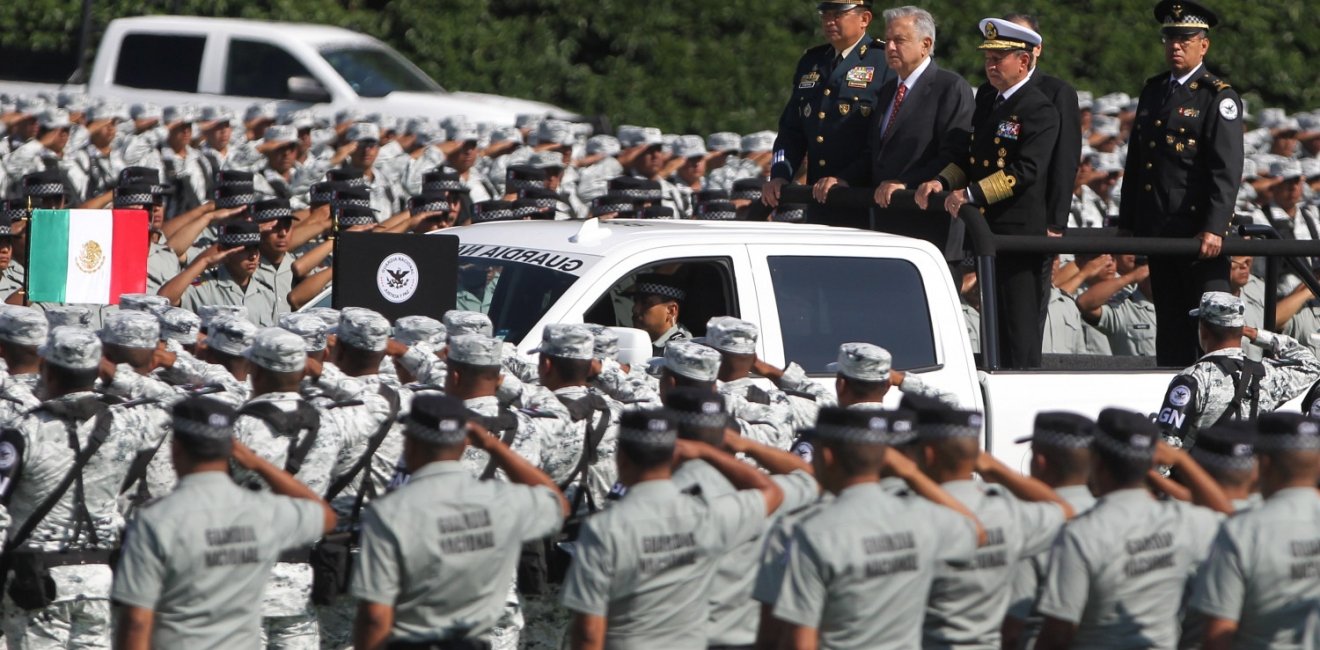Mexico’s forthcoming national election is a great opportunity to take a step back and rethink the bigger picture of public security in Mexico. Crime incidence data shows that the policies and actions of the previous three administrations—Calderón, Peña Nieto, and López Obrador—have not worked to significantly reduce most crime and violence indicators.
If public security is to be improved in Mexico, understanding what has gone wrong in security policy is of utmost importance. A good starting point is to question the core (public) premises behind the actions of the different administrations.
We could plausibly state that the Calderon administration assumed that “winning the war” was a matter of relative coercive power; which implies that a sufficiently powerful and well-designed intervention by state forces would reduce criminal organizations’ activities. It was clearly not the case. Other variables proved to have a greater effect, such as the inelastic demand for drugs and corruption by public officials.
The Peña Nieto administration was not fully explicit in its approach to fighting crime. It seemed a lighter version of Calderon’s policy, but with less initiative and more reactive in the use of public force. The results were no better.
The AMLO government changed the core premise, at least in the discourse. It assumed that individuals—young people especially—commit crimes and join criminal organizations because of economic necessity. Massive amounts of (unconditional) cash were transferred to disincentive criminal activity, coupled with a more passive role by state forces, mainly the military that took control of security. Again, security has not improved. Contrary to what the AMLO administration assumed, the transfers are a complement to other types of incomes—including that from criminal activities—rather than a substitute. And there is no solid evidence showing that necessity has a linear relationship with the likelihood of committing a crime, as the policy seems to assume. Reducing the use of force from the state has not reduced criminal violence either; because most of that violence is related to confrontations among criminal organizations in which the state is merely a spectator.
The above paragraphs are obviously a massive simplification, but provide a useful guide on how not to think about the solutions to Mexico’s security problems. The security policy of the new administration, either Claudia Sheinbaum or Xóchitl Gálvez, should learn from past failures and ask the right questions when designing their policy interventions.
Increasing the state’s coercive power is a necessary, but not sufficient, condition to effectively reduce crime and violence. We need to think beyond what the different administrations have already implemented. Here are two key questions that we should be asking ourselves to design the new administration’s security policy.
First, how can the current public security problem be turned into something more manageable? It is clear that state organizations are surpassed. When a problem is so big and complex, such as public security in Mexico, a useful approach is to first think about how we can make the problem smaller, before thinking about potential solutions. An obvious candidate to simplify the fight is to legalize drugs to minimize black markets and the conflict upon them. This will not solve the problem by itself, but it will free a lot of budgetary and human resources to fight “easier” crimes and will reduce the incentives for corruption. Legalizing is not trivial obviously, but we should start thinking and working on it.
Second, how can we reduce the lethality of criminal organizations’ confrontations? In most countries, there are criminal organizations and there are conflicts among criminal organizations, but not all confrontations are equally lethal. The variance is strongly related to the sort of weapons that these organizations utilize to confront each other. In this respect, illegal arms trafficking from the United States is a key problem to tackle. This administration has taken a very important step by explicitly including the topic in the agenda and acting upon it. It should now be a priority.
Overall, the least we should ask is that the new policies and actions are based on evidence. There is already a significant amount of knowledge on the matter, which should be used.
Author


Mexico Institute
The Mexico Institute seeks to improve understanding, communication, and cooperation between Mexico and the United States by promoting original research, encouraging public discussion, and proposing policy options for enhancing the bilateral relationship. A binational Advisory Board, chaired by Luis Téllez and Earl Anthony Wayne, oversees the work of the Mexico Institute. Read more

Explore More
Browse Insights & Analysis
Greenland’s New Governing Coalition Signals Consensus

The Future of France's Far-Right Party

Ukrainian Issue in Polish Elections

